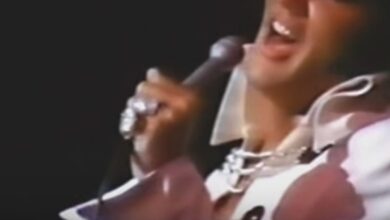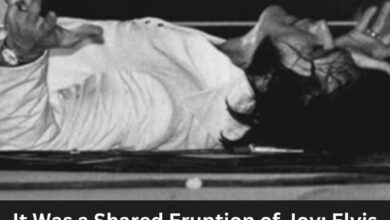A Stunning Tune From The Maestro Of Music, The Epitome Of Cool
Elvis Presley, often referred to as “The King of Rock and Roll,” remains one of the most significant cultural icons of the 20th century. Born on January 8, 1935, in Tupelo, Mississippi, Elvis’s early life was steeped in music, influenced by gospel, country, and rhythm and blues. His unique blend of these genres, combined with his compelling stage presence and distinctive voice, allowed him to revolutionize the music industry and lay the groundwork for rock and roll. He became a household name in the 1950s, with a string of hits that captivated millions and challenged the norms of popular music.
The 1968 Comeback Special marked a pivotal moment in Presley’s career. After a period of focusing on film during the 1960s that included a string of largely forgettable movies and soundtrack albums, Elvis sought to renew his connection with live performance and his audience. The special was initially a television production, designed to showcase his talents in a way that was authentic and raw, stripping away the layers of Hollywood glamour that had come to define much of his previous work. It was a bold move that demonstrated his desire to return to his roots in music and performance.
“Let Yourself Go,” written by Joy Byers and first recorded by Nancy Sinatra, typified the energetic and spontaneous style that Elvis was known for. This particular song was a highlight of the Black Leather segment of the special, where Presley’s outfit—a fitted black leather suit—served as a symbolic return to the rebellious rock-and-roll persona he had embodied in the 1950s. The choice of song and the visual presentation were intentional, designed to evoke the same excitement and energy that he had showcased earlier in his career. The song’s theme also resonated with the spirit of the times, encouraging listeners to abandon their inhibitions and embrace the joy of living.
The performance itself was electrifying. Beginning with a distinctive guitar riff, Elvis exuded confidence and passion, captivating the audience right from the start. The lyrics called for a sense of liberation and enjoyment, perfectly encapsulating the ethos of the late 1960s. As he urged the audience to “let yourself go,” it was clear that he had tapped into a collective desire for freedom and expression. His body movements, filled with charisma, combined with his powerful vocal delivery, created an atmosphere that was both intimate and exhilarating.
Elvis’s connection with his audience during the performance was palpable. He actively engaged with the crowd, sharing smiles and laughter, an indication of his desire to create a communal experience. The audience responded with enthusiasm, recognizing that they were witnessing a significant moment in the history of music. This interaction reaffirmed his ability to communicate emotion and energy through live performance, a skill that set him apart from many of his contemporaries.
The Comeback Special reestablished Elvis not just as a visual spectacle but as a remarkable vocalist and a dynamic performer. The rawness of “Let Yourself Go” was a reminder of his rock and roll roots and allowed him to reclaim his position as a leader in the genre. The special effectively bridged the gap between his youthful exuberance and the more mature artist he had become, proving that he still possessed the power to captivate an audience.
Moreover, the impact of the 1968 Comeback Special on Elvis’s career was far-reaching—sparking a renaissance that would lead to further successful projects, including renewed musical recordings and live performances. It demonstrated that Elvis could still resonate with both older and new generations of fans. The special revitalized his career and reestablished his presence in the music world, leading to a string of influential albums in the following years.
Beyond its immediate impact on Presley’s career, the Comeback Special also laid the groundwork for future televised music performances. As other artists began to recognize the potential of combining engaging visuals with live music, the format of music specials would evolve significantly in the years that followed. Elvis’s performance in “Let Yourself Go” became a template for future musicians seeking to connect with their audience in meaningful ways.
Ultimately, the performance of “Let Yourself Go” encapsulates the essence of Elvis Presley—his remarkable ability to blend style, charisma, and musicality into a potent force that galvanized audiences. His legacy, solidified through moments like this, continues to influence artists across various genres, and the 1968 Comeback Special remains a landmark event in the annals of music history. Elvis Presley’s indelible mark on the world of entertainment persists, echoing through the ages as a testament to his enduring appeal and extraordinary talent.



